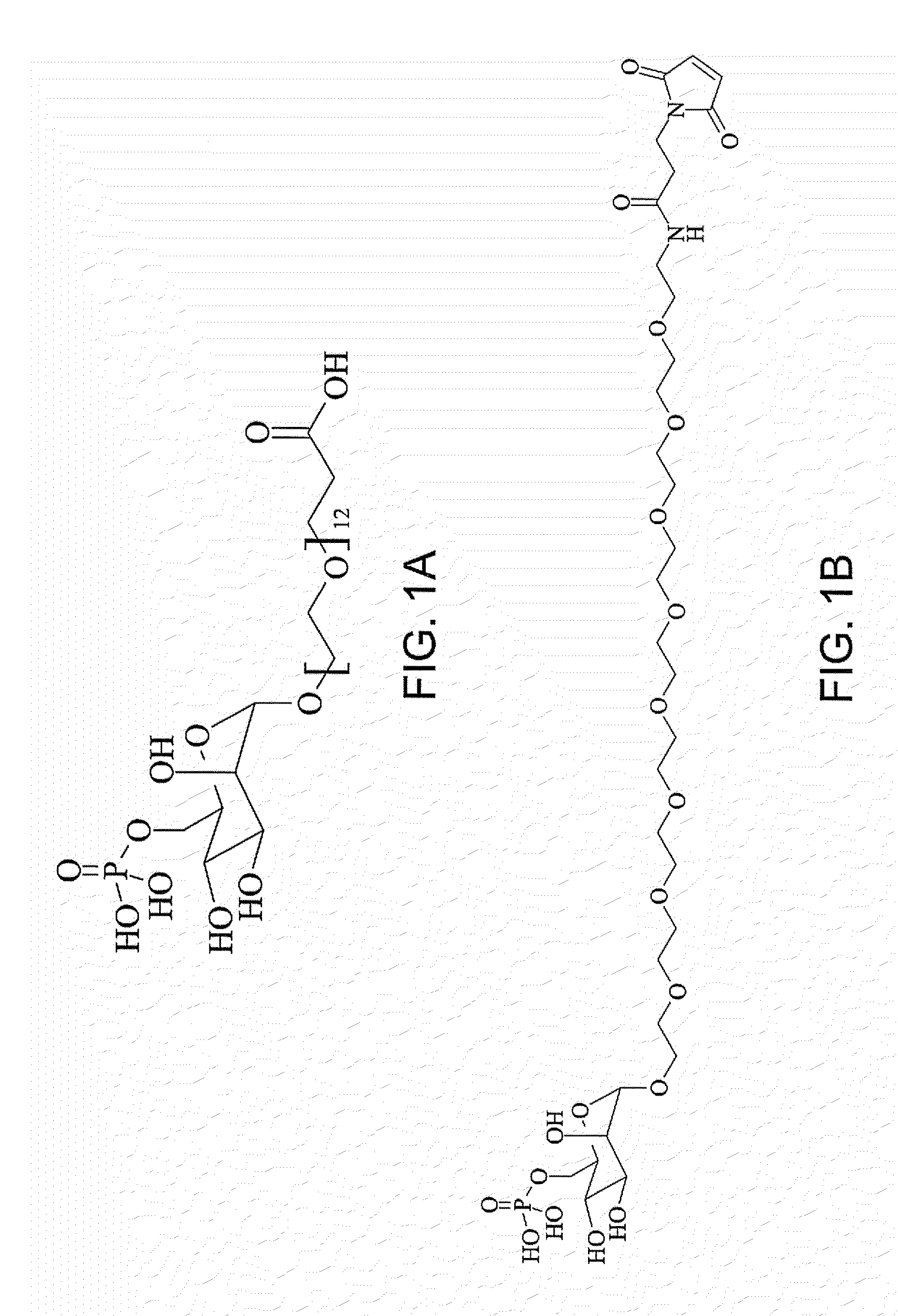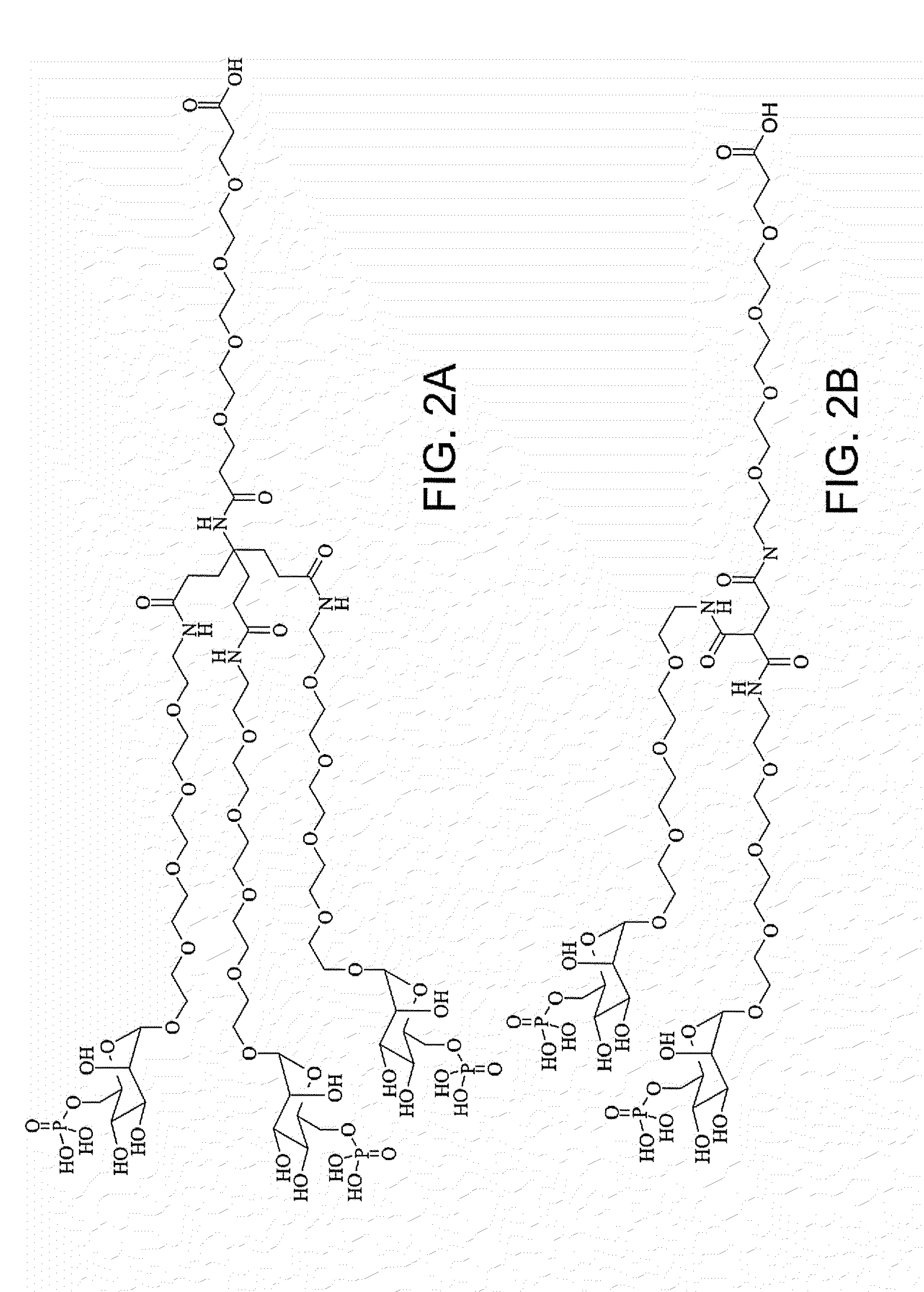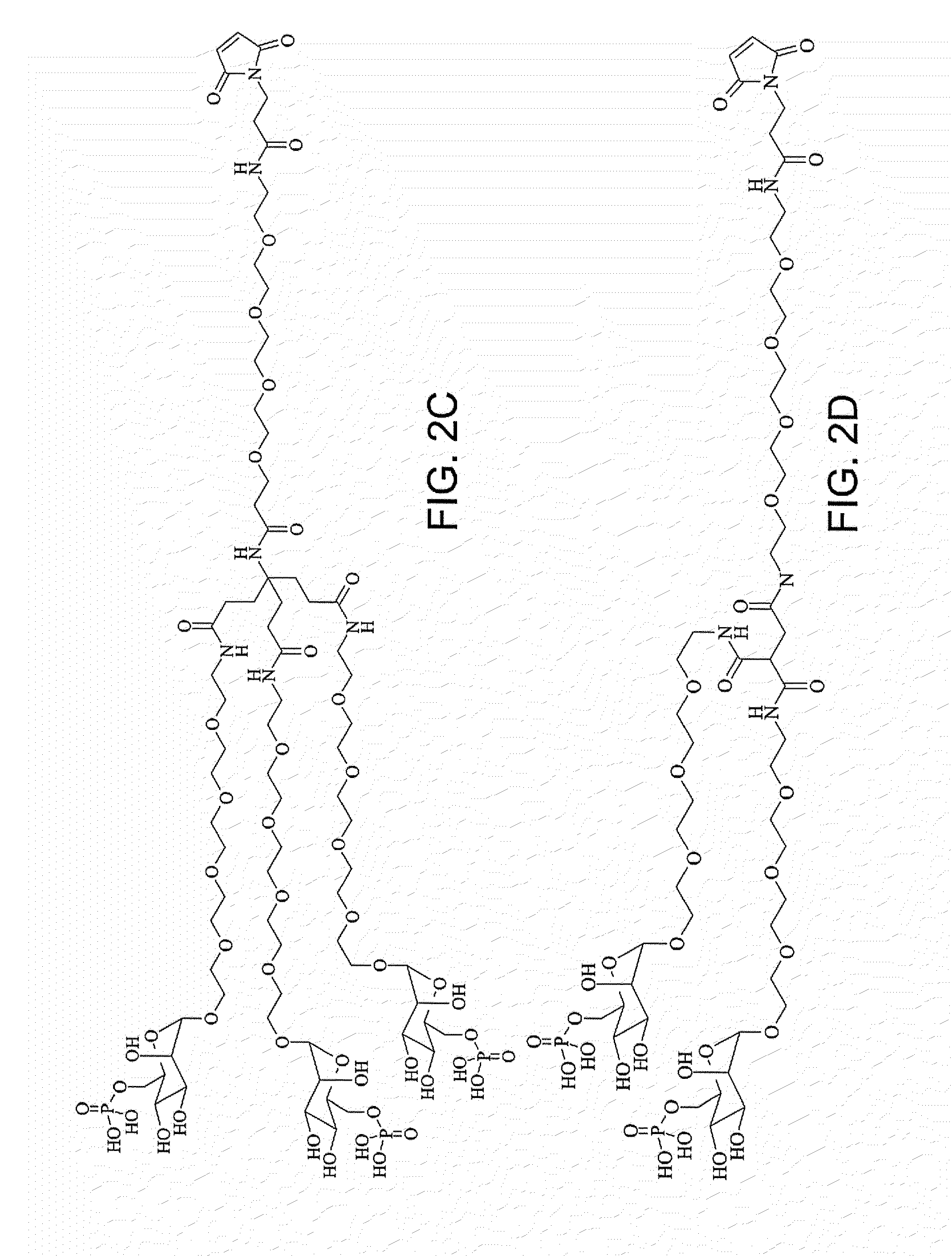Saccharide-containing protein conjugates and uses thereof
a technology of conjugates and saccharides, applied in the field of saccharide-containing active ingredients, can solve the problems of promoting oxidative stress, reducing therapeutic potency or necessitating higher doses, and oxidative damage to additional sites on the protein, so as to improve performance, improve performance, and improve the effect of performan
- Summary
- Abstract
- Description
- Claims
- Application Information
AI Technical Summary
Benefits of technology
Problems solved by technology
Method used
Image
Examples
example 1
Synthesis of Mannose (α1)-O—CH2CH2—(OCH2CH2)7—O—CH2CH2COO—NHS
[0544]As mentioned above, the glycosylation reagents of the invention can be synthesized using a variety of synthetic methodologies. One of these methodologies is set forth herein in the synthesis of a specific mannose-containing derivatization reagent (glycosylation reagent):
[0545]A protected PEG linker (HO—CH2CH2—(OCH2CH2)7—O—CH2CH2COOR) is synthesized by mono-protecting the nonaethylene glycol (HO—CH2CH2—(OCH2CH2)8—OH) with TBDMS-Cl. The free hydroxyl group is converted to a chloride by reacting the mono-protected PEG with thionyl chloride, using pyridine as a proton scavenger under elevated temperature (60° C.). The chloride is further converted to a carboxyl group by the reaction with Mg° in anhydrous ether and further reacting the resulting organometallic derivative (TBDMS-O—CH2CH2—(OCH2CH2)7—O—CH2CH2MgCl) with carbon dioxide. Following acidification with H2SO4, the carboxylic acid (TBDMS-O—CH2CH2—(OCH2CH2)7—O—CH2CH2...
example 2
Synthesis of M6P(α1)-O—CH2CH2—(OCH2CH2)7—O—CH2CH2COOH
[0548]The following describes another exemplary methodology for the synthesis of a specific mannose-containing derivatization (glycosylation) reagent having a carboxylate functional group.
[0549]A protected PEG linker (HO—CH2CH2—(OCH2CH2)7—O—CH2CH2COOR) is synthesized as described in Example 1.
[0550]A mixture of 1,2,3,4-tetra-O-acetyl-D-mannose, the mono-protected PEG linker (HO—CH2CH2—(OCH2CH2)7—O—CH2CH2COOR wherein R═CH3) and ZnCl2 is heated at 100-110° C. with stirring under reduced pressure, with a soda lime trap interposed between the reaction vessel and the vacuum source to remove acetic acid, for 4 hours. The resulting mass is dissolved in ethyl acetate, washed twice with water and dried over anhydrous Na2SO4. The ethyl acetate is removed under reduced pressure and the residue is chromatographed on a silica gel 60 chromatography column to give the 1-PEG-2,3,4-tri-O-acetyl-D-mannoside. The product is further chromatographed t...
example 3
Characterization of Glycosylating Reagents
[0558]The glycosylating reagents M6P-PEG12-COOH and M6P-PEG8-maleimide were prepared using common methodologies.
[0559]Following are the spectral data of M6P-PEG12-COOH:
[0560]1H NMR (400 MHz, D2O): δ=4.90 (m, 1H), 4.12 (m, 1H), 3.98 (m, 1H), 3.94-3.88 (m, 1H), 3.87-3.83 (m, 1H), 3.81 (t, J=6.1 Hz, 2H), 3.78-3.74 (m, 2H), 3.73-3.68 (m, 48H), 2.67 (t, J=6.1 Hz, 2H) ppm;
[0561]13C-NMR (D2O): δ=176.55, 100.22, 71.87, 71.80, 70.51, 70.09, 69.73, 69.66, 69.61, 66.62, 66.42, 66.34, 64.10, 34.65 ppm; and 31P-NMR (D2O): δ=1.64 (s).
[0562]Following are the spectral data of M6P-PEG8-maleimide:
[0563]1H NMR (400 MHz, D2O): δ=6.86 (m, 1H), 4.90 (m, 1H), 3.75 (m, 1H), 4.12 (m, 1H), 3.98 (m, 1H), 3.92-3.83 (m, 1H), 3.76 (m, 2H), 3.74-3.67 (m, 28H), 3.62 (t, J=5.2 Hz, 2H), 3.55 (t, J=6.4, 2H), 3.39 (s, 1H), 3.36 (t, J=5.2 Hz, 2H), 2.28 (t, J=7.6 Hz, 2H), 1.91 (quintet, J=7.2 Hz, 2H) ppm; and
[0564]31P-NMR (D2O): δ=1.64 (s).
PUM
| Property | Measurement | Unit |
|---|---|---|
| mass | aaaaa | aaaaa |
| mass | aaaaa | aaaaa |
| MW | aaaaa | aaaaa |
Abstract
Description
Claims
Application Information
 Login to View More
Login to View More - R&D
- Intellectual Property
- Life Sciences
- Materials
- Tech Scout
- Unparalleled Data Quality
- Higher Quality Content
- 60% Fewer Hallucinations
Browse by: Latest US Patents, China's latest patents, Technical Efficacy Thesaurus, Application Domain, Technology Topic, Popular Technical Reports.
© 2025 PatSnap. All rights reserved.Legal|Privacy policy|Modern Slavery Act Transparency Statement|Sitemap|About US| Contact US: help@patsnap.com



